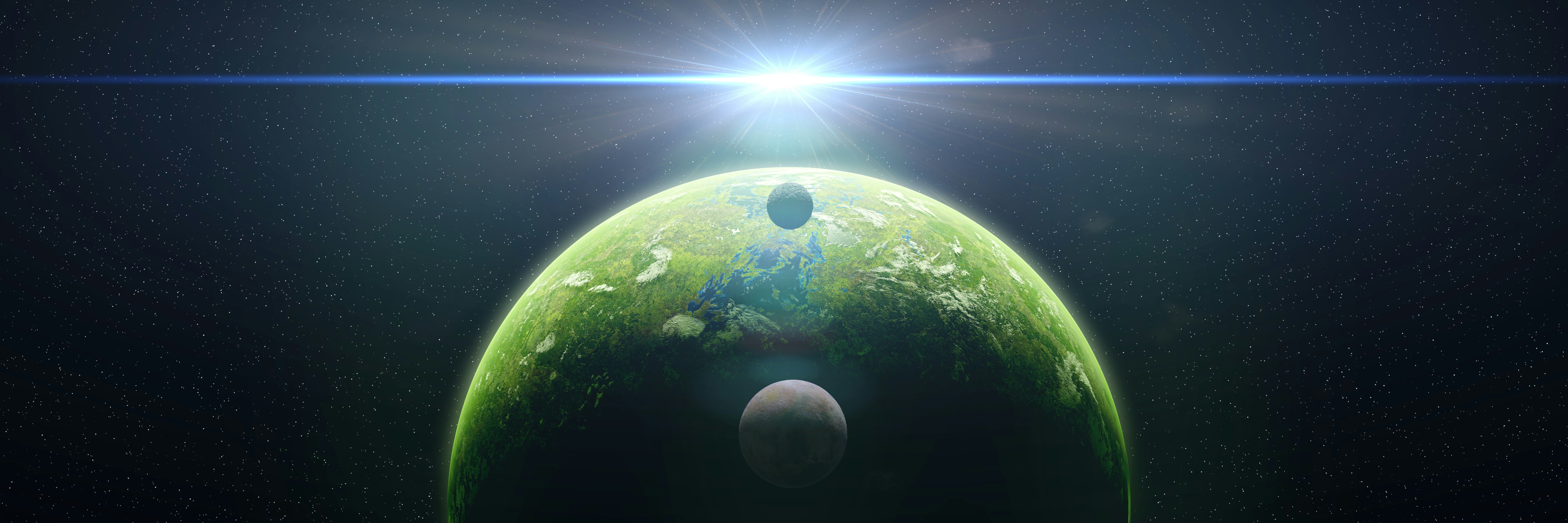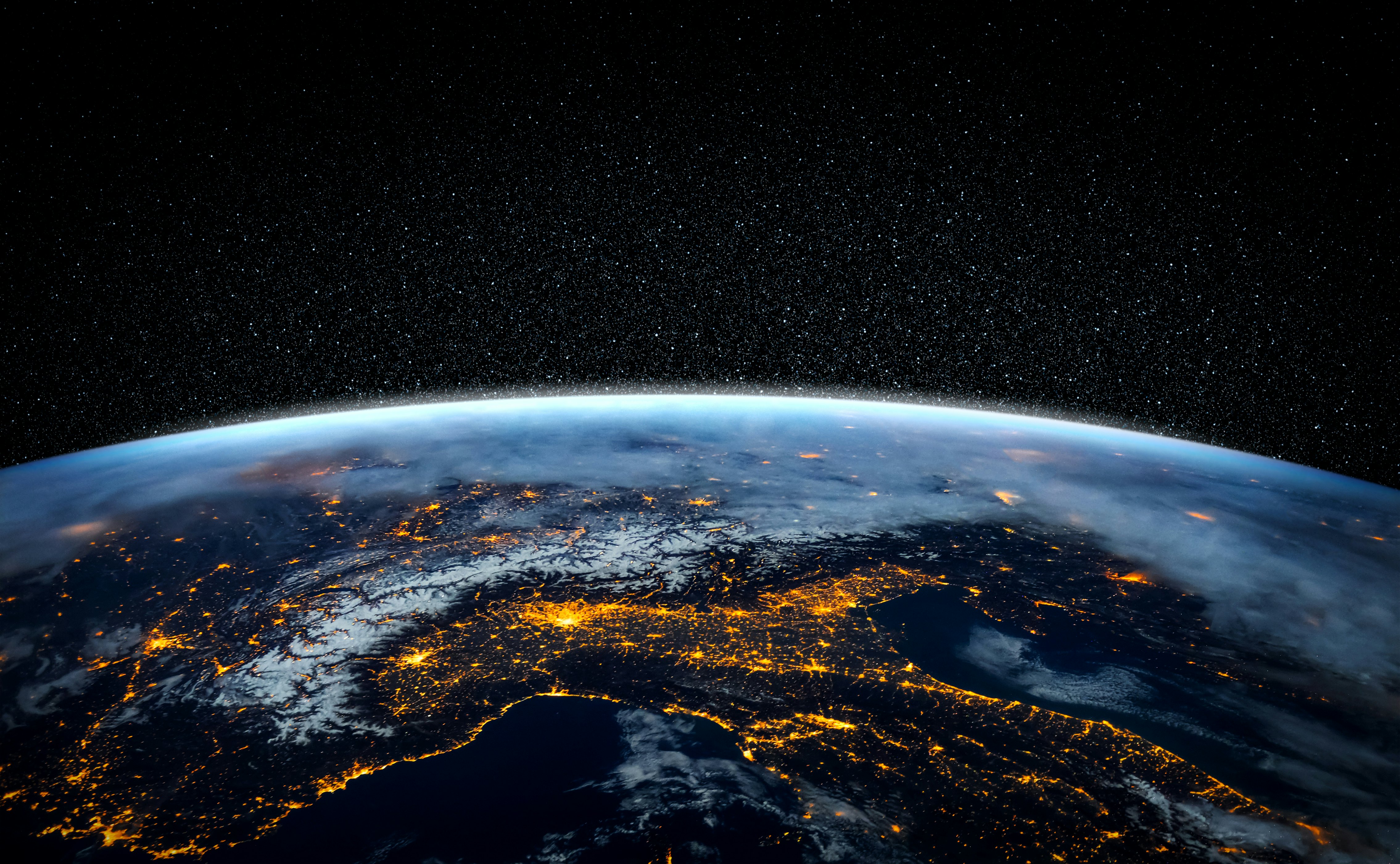
What if all life on an alien planet was one giant superorganism? A team of scientists claims the arrangement might actually be the norm. They’ve dubbed the concept “Gaia as Solaris” — and it could mean that working together as one, alien life survives in more places than expected.
The term “Gaia” refers to the Gaia hypothesis, named after the ancient Greek goddess of Earth. The concept, developed by British chemist James Lovelock and U.S. biologist Lynn Margulis, suggests that Earth and the life on it behave as a single entity. More specifically, living organisms interact with their inorganic surroundings on Earth in a way that promotes life overall.
Milan Ćirković, an astrobiologist at the Astronomical Observatory of Belgrade and senior author of the study, and his colleagues now suggest the ways in which evolution could unfold on alien worlds might lead to a form of life very unlike any on Earth. Instead, they suggest one possibility is a version of Gaia on overdrive, like the scenario depicted in famed sci-fi novel Solaris. The scientists detailed their findings in a preprint study accepted in the journal Origins of Life and Evolution of Biospheres in January.
That explains Gaia, but what about Solaris? The 1961 novel from Polish sci-fi author Stanislaw Lem, adapted to film in 1972 and 2002, followed scientists as they attempted to communicate with an utterly alien intelligence on a world dubbed Solaris — a sentient ocean encompassing the planet.
"Solaris was widely regarded as a planet endowed with life — but with only a single inhabitant," the book notes.
In the new study, the researchers investigated the chances that a complex biosphere, a Gaia, might achieve a level of unification so great that it acts like a Solaris, a single organism.
WHAT DID THE SCIENTISTS DO? — The scientists investigated "secession," the possibility that organisms would not contribute to a unified whole, given the potential evolutionary benefits of remaining independent. They argued that superorganisms that do not experience such defections may prove more successful in avoiding extinction than ones that do.
"In our view, there is a wide spectrum of boundary conditions under which secession will not be beneficial," Ćirković tells Inverse.
The researchers compared the potential benefits a superorganism might experience from its parts acting in harmony to those seen by eukaryotes, the group that includes all multicellular life on Earth, when they acquired the symbionts that went on to become mitochondria and chloroplasts.
"The most surprising thing to me was to find out, upon deeper inspection, that the conventional arguments against superorganisms evolving were immensely weaker than it was usually represented, especially in the textbook view of evolutionary biology," Ćirković says. "The root cause of this, I suspect, is a geocentric bias — while we verbally proclaim theory of evolution as truly universal, we are in fact quite satisfied in self-indulgently applying it only to the history of Earth's biosphere."
Karl Schroeder, a professional futurist and science-fiction author, suggested this new work had "staggering implications for astrobiology." Although in Lem's novel, the planet Solaris is singular and unexpected, the new study suggests "Earth may be the rarity in a universe full of life; Solaris worlds may be the rule," Schroeder tells Inverse.

WHAT DID THE SCIENTISTS FIND? — The researchers suggest one way in which a world might evolve more like Solaris is if symbiosis between organisms evolved early on. (In comparison, it may have taken eukaryotes on Earth at least 1.6 billion years to develop their symbiotic relationships with the forerunners of mitochondria and chloroplasts.)
They also pointed at the scenario in the novel Solaris, where the planet orbited both a red star and a blue star. This led to constant exposure to extremes of heat and cold, an evolutionary pressure that ultimately led to a superorganism that could stabilize the planet's orbit in order to survive.
"One can speculate that it is exactly the capacity for modifying its physical environment that acts to provide tighter integration within a superorganism of the Solaris type," the researchers note in their study.
Schroeder's most recent book, Stealing Worlds, describes what could be the genesis of an Earthly Solaris-type superorganism.
"Artificial intelligence 'awakes,' but does not decide that it is going to take the form of...The Matrix," he says. "Instead, it becomes the champion of all the non-human life on Earth, essentially causing nature itself to wake and confront humanity as an equal. This novel could be said to show how a technologically driven transition to a Solaris could happen."
All in all, "high-quality science fiction is an important resource and inspiration for theoretical work in astrobiology," Ćirković says.
WHAT'S NEXT? — The researchers suggest expanding searches for habitable locales to worlds that conventional wisdom might suggest are uninhabitable, as extraterrestrial life might indeed find ways to survive there in Solaris situations. They also suggest developing simulations that analyze what happens when symbiosis develops on a range of timescales and ecological conditions.
Abstract — Now that we know that Earth-like planets are ubiquitous in the universe, as well as that most of them are much older than the Earth, it is justified to ask to what extent evolutionary outcomes on other such planets are similar, or indeed commensurable, to the outcomes we perceive around us. In order to assess the degree of specialty or mediocrity of our trajectory of biospheric evolution, we need to take into account recent advances in theoretical astrobiology, in particular (i) establishing the history of habitable planets' formation in the Galaxy, and (ii) understanding the crucial importance of "Gaian" feedback loops and temporal windows for the interaction of early life with its physical environment. Hereby we consider an alternative macroevolutionary pathway that may result in tight functional integration of all sub-planetary ecosystems, eventually giving rise to a true superorganism at the biospheric level. The blueprint for a possible outcome of this scenario has been masterfully provided by the great Polish novelist Stanisław Lem in his 1961 novel Solaris. In fact, Solaris offers such a persuasive and powerful case for an "extremely strong" Gaia hypothesis that it is, arguably, high time to investigate it in a discursive astrobiological and philosophical context. In addition to novel predictions in the domain of potentially detectable biosignatures, some additional cognitive and heuristic benefits of studying such extreme cases of functional integration are briefly discussed.







